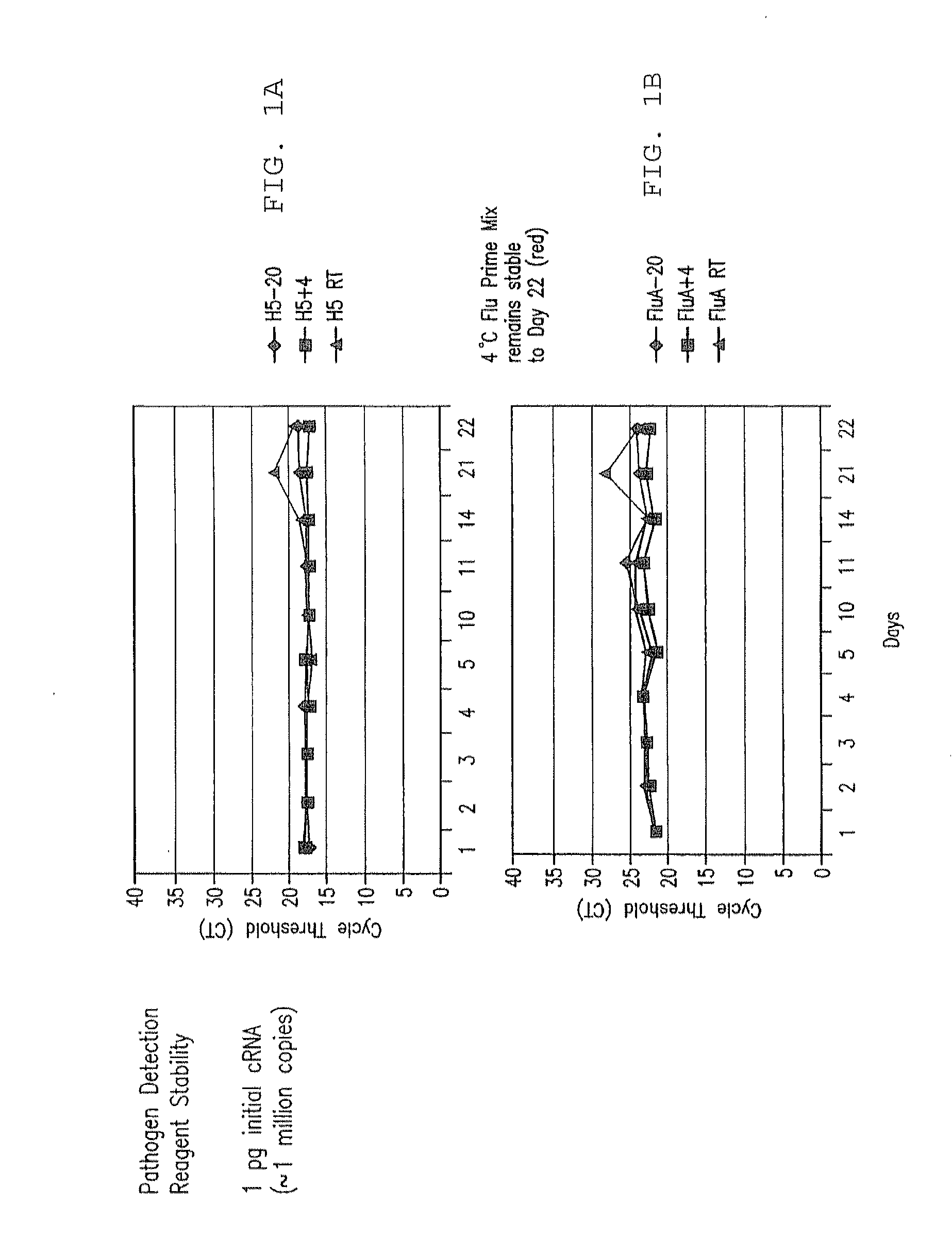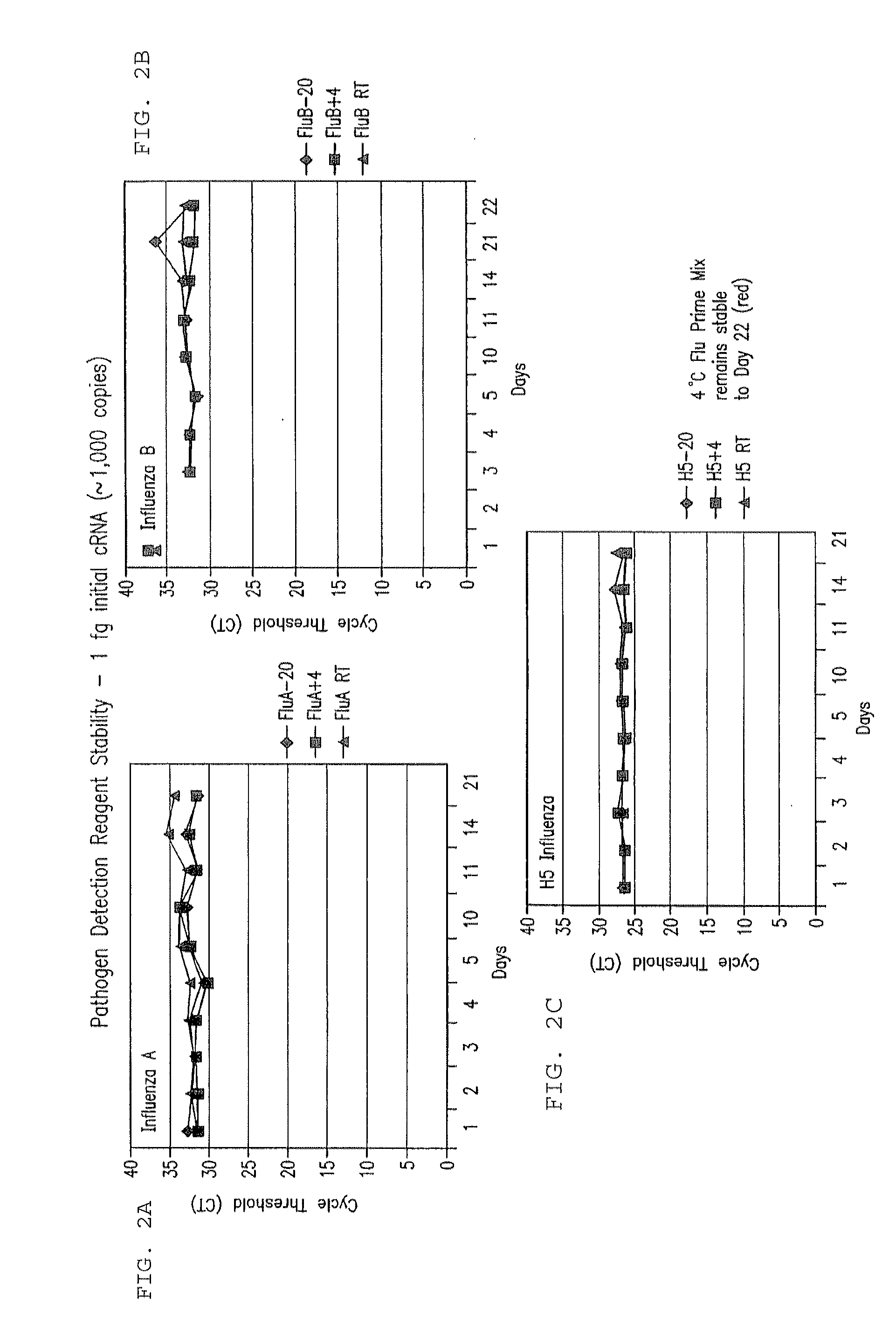Compositions and Methods for Rapid, Real-Time Detection of Influenza A Virus (H1N1) Swine 2009
a technology of influenza a virus and real-time detection, which is applied in the field of biological organism detection products, can solve the problems of high mortality and morbidity, spread of h5n1 virus from human to human, and little or no immunity against them in humans at present, and achieve the effect of rapid detection and identification of microorganisms
- Summary
- Abstract
- Description
- Claims
- Application Information
AI Technical Summary
Benefits of technology
Problems solved by technology
Method used
Image
Examples
example 1
A Protocol for Collection and Extraction of Genomic Material in the Field
[0239]Oropharyngeal, cloacal, nasal and tracheal swabs of a subject, such as a chicken, are taken. Swabs are suspended in 1.5 ml of BHI and extracted with an RNeasy Mini® kit, (Qiagen, Valencia, Calif., USA; MagMax Kit, Ambion, Austin, Tex., USA). The RNA is eluted in 60 μl of RNase®-free water.
example 2
A Protocol for Identification of Genomic Material
[0240]Collection of Clinical Samples and Virology—All original primary specimens (throat swab / nasal washes) and cultured samples used in this study were collected over 7 (99 / 00, 00 / 01, 01 / 02, 02 / 03, 03 / 04, 04 / 05, and 05 / 06) and 3 (03 / 04; 04 / 05, and 05 / 06) influenza seasons, respectively, under the auspices of the Department of Defense Global Emerging Infectious Surveillance (DoD-GEIS) network. Primary specimens were collected within the first 48-72 hours of symptom onset from patients presenting with a fever ≧100.5° F. oral, and cough or sore throat. Dacron throat swab specimens were submerged in 3.0 ml viral transport media (M4 MicroTest Multi-Microbe Media). Submerged throat swabs and saline nasal wash material (5 ml) were shipped on dry ice to Brooks City Base, San Antonio, Tex. Propagation of influenza viruses from primary specimens was achieved using the centrifugation-enhanced shell-vial culture technique followed by typing usin...
example 3
Detection of Influenza Virus-Specific Polynucleotide Sequences in Clinical Samples
[0257]128 samples from 64 cotton rats were taken from lung and nasal tissue. Some of the animals were influenza virus culture negative. cRNA was extracted from the samples and added to the prime mix. Real time rRT PCR analysis using ABI 7500 was performed, and influenza RNA was detected in the samples within 90 minutes. Importantly, influenza was detected at levels of about 1 to >100 influenza viruses in tissues.
PUM
 Login to View More
Login to View More Abstract
Description
Claims
Application Information
 Login to View More
Login to View More - R&D
- Intellectual Property
- Life Sciences
- Materials
- Tech Scout
- Unparalleled Data Quality
- Higher Quality Content
- 60% Fewer Hallucinations
Browse by: Latest US Patents, China's latest patents, Technical Efficacy Thesaurus, Application Domain, Technology Topic, Popular Technical Reports.
© 2025 PatSnap. All rights reserved.Legal|Privacy policy|Modern Slavery Act Transparency Statement|Sitemap|About US| Contact US: help@patsnap.com



